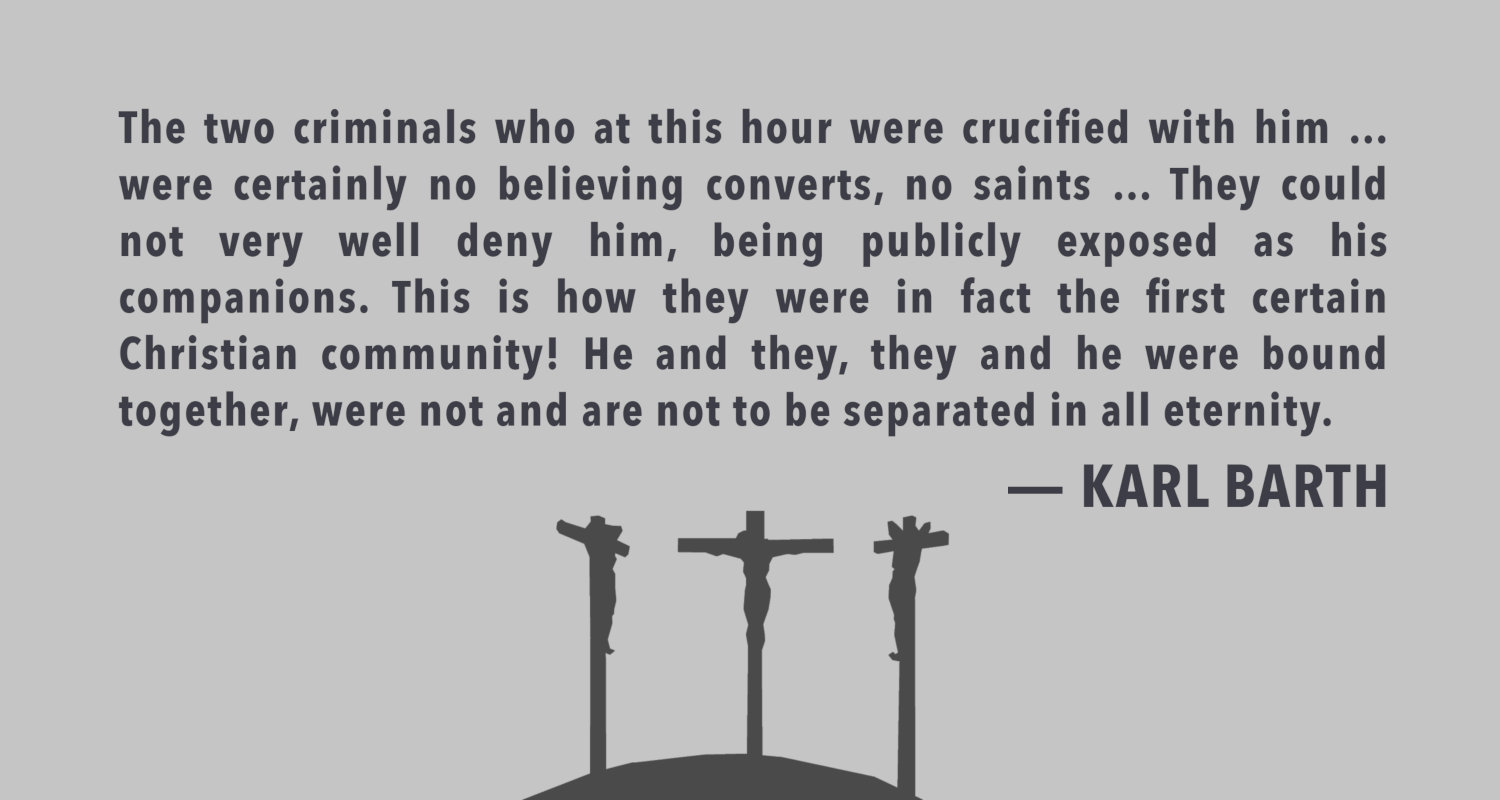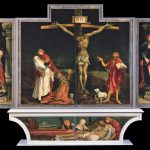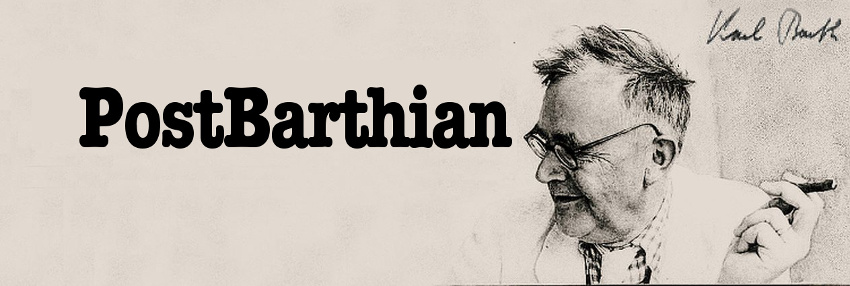
On Good Friday in 1957, Karl Barth preached to the Basel prisoners (as he often did) a sermon he titled "Criminals with Him" based on Luke 23:33: " They crucified him with the criminals, one on either side of him." I've heard many Good Friday sermons that either focus on the Crucifixion of Jesus alone, or on the two criminals at Jesus side (often ironically to justify either Double Predestination or Semi-Pelagianism). Barth explains that these three criminals belong eternally together and form the first Christianity community. The context of "Criminals with Him" was delivered to criminals in the Basel prison, and so Barth's sermon is particularly helpful for understanding the other two criminals on Calvary. The full text of "Criminals with Him" is available in Karl Barth's Deliverance to the Captives, which is a collection of Barth's sermons to the Basel prisoners that I highly recommend as an accessible introduction to Barth. I've selected two quotations from this sermon, and recommend reading the full text for many more incites into Good Friday.
They crucified him with the criminals, one on either side of him." I've heard many Good Friday sermons that either focus on the Crucifixion of Jesus alone, or on the two criminals at Jesus side (often ironically to justify either Double Predestination or Semi-Pelagianism). Barth explains that these three criminals belong eternally together and form the first Christianity community. The context of "Criminals with Him" was delivered to criminals in the Basel prison, and so Barth's sermon is particularly helpful for understanding the other two criminals on Calvary. The full text of "Criminals with Him" is available in Karl Barth's Deliverance to the Captives, which is a collection of Barth's sermons to the Basel prisoners that I highly recommend as an accessible introduction to Barth. I've selected two quotations from this sermon, and recommend reading the full text for many more incites into Good Friday.
Criminals With Him
Karl Barth explains that Jesus was crucified with two criminals, and the three crosses on Golgotha stand in public unity. All three of them were fixed to their crosses together and were inseparable due to the nails. Barth speculates that neither criminal knew Jesus beforehand, and only after they were dying together, did one of them begin to realize that he had been "crucified with Christ" (Gal 2:19), and the other did not yet understand that he had also been "crucified with Christ" too. These two criminals had been crucified with Christ, and they were now eternally inseparable from Jesus Christ for the whole world to observe at the most important moment in the history of the world, and remembered every Good Friday around the world to this day.
Karl Barth said in "Criminals with Him" (Good Friday, 1957):
'They crucified him with the criminals'. Which is more amazing, to find Jesus in such bad company, or to find the criminals in such good company? As a matter of fact, both are true! One thing is certain: here they hang all three, Jesus and the criminals, one at the right and one at the left, all three exposed to the same public abuse, to the same interminable pain, to the same slow and irrevocable death throes. Like Jesus, these two criminals had been arrested somewhere, locked up and sentenced by some judge in the course of the previous few days. And now they hang on their crosses with him and find themselves in solidarity and fellowship with him. They are linked in a common bondage never again to be broken, just as the nails that fastened them to the piece of wood would never break. It was as inescapable for them as it was for him. It was a point of no return for them as for him. There remained only the shameful, pain stricken present and the future of their approaching death. (Strangely enough, there are many paintings of Jesus' crucifixion were the two criminals are lost to sight. It would perhaps be more appropriate not to represent Jesus' death at all. But if it is done, then the two thieves on the right and on the left must not be left out. In any painting or representation where they are absent, an important, even an essential, element is missing.) [1]
First Christian Community
 In the sermon, Karl Barth keenly notices that many artistic works of the Crucifixion depict Jesus crucified alone (without the two criminals) and remarks that it is inappropriate to leave them out. (It is an ironic and illuminating observation, because Karl Barth worked with the Isenheim Altarpiece hanging over his desk that excludes the two criminals.) The crucifixion of the two criminals with Jesus signifies died for the whole world as his doctrine of election teaches (not just the elect, but all), and that Jesus is the rejected one and elected one as his doctrine of double predestination teaches.
In the sermon, Karl Barth keenly notices that many artistic works of the Crucifixion depict Jesus crucified alone (without the two criminals) and remarks that it is inappropriate to leave them out. (It is an ironic and illuminating observation, because Karl Barth worked with the Isenheim Altarpiece hanging over his desk that excludes the two criminals.) The crucifixion of the two criminals with Jesus signifies died for the whole world as his doctrine of election teaches (not just the elect, but all), and that Jesus is the rejected one and elected one as his doctrine of double predestination teaches.
Barth is correct that the two criminals crucified with Christ should always remain in view, and so that these three may stand out as an icon of universalism (or universal redemption). The grace of Jesus Christ has always extended to heathens, and the Church includes criminals that accept Jesus and also those who do not.
Karl Barth also said in "Criminals with Him" (Good Friday, 1957):
They crucified him with the criminals. Do you know what this implies? Don't be too surprised if I tell you that this was the first Christian fellowship, the first certain, indissoluble and indestructible Christian community. Christian community is manifest wherever there is a group of people close to Jesus who are with him in such a way that they are directly and unambiguously affected by his promise and assurance. These may hear that everything he is, he is for them, and everything he does, he does for them. To live by this promise is to be a Christian community. The two criminals were the first certain Christian community. . . .
The two criminals who at this hour were crucified with him had probably never heard of him before and were certainly no believing converts, no saints. Far from it! The opposite is true! But in this hour they could not abandon him, they could not sleep. Willingly or not, they were forced to watch with him many long hours on the cross. Nor could they escape his dangerous company. They could not very well deny him, being publicly exposed as his companions. This is how they were in fact the first certain Christian community! He and they, they and he were bound together, were not and are not to be separated in all eternity. Great things had to pass before Peter and the rest of the disciples joined this first Christian community. And when they did so, they could only 'get in line behind' the two criminals who were already first, and up there in front, with Jesus on Golgotha. [2]
Sources:
1. Barth, Karl. Deliverance to the Captives. "Criminals With Him". Trans. M. Wieser. New York: Harper & Row, 1961. 77-78. Print.
2. Barth, Karl. Ibid.
Related: Basel, Basel Prison, Crucifixion, Deliverance to the Captives, Good Friday, Karl Barth, Luke 23:33, Prison



April 18th, 2019 - 01:49
Great stuff! I’d only recently made the connection between Matt 20:20-23 and the two criminals. What does it mean to be at the right and left hand of Jesus? Not quite what James and John thought!
April 18th, 2019 - 08:03
You’re right. Matthew further confirms it. It’s very obvious once you’ve seen the connection. Thanks for reading!
July 23rd, 2021 - 12:22
Great read and insight. However, I respect paintings of the Savior alone because although the three of them hung and died simultaneously, the Death of the Savior was way more meaningful and impactful, necessary and results ridden. Jesus is King although he died like a criminal – a criminal he was not. There are many who serve the purpose of God who appear to be regular folks but are in fact sent from above. In turn are treated just like regular folks, brutalized like regular folks but in reality are/have Kingdom blood running through their veins.
March 23rd, 2024 - 14:56
very impressed! Barth is very right. Excluding the two criminals from Calvary portrait sends a massage that leaves me out of the equation. the two criminals represent the reconciliation work of God through Christ by which criminals such as me are co-crucified Jesus Christ. Both criminals were the same and preached the same sermon, we don’t deserve God’s grace. Just like the prodigal and the good sons, we are all sons of the same Father who loves us unconditionally despite our actions, perceptions and attitudes.